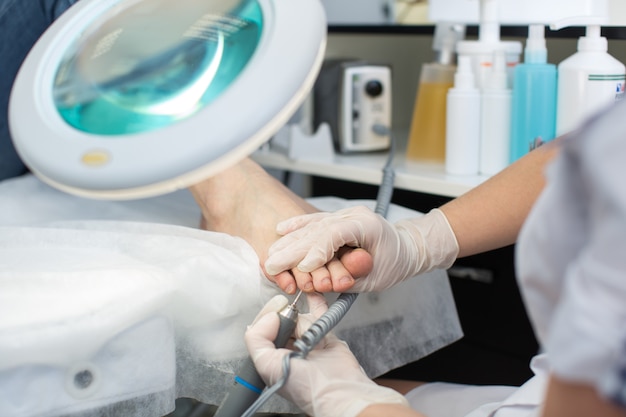Biomechanical Differences For Men And Women And Its Effects In Podiatry
Biomechanical podiatry for the patients is carried out considering gender anatomical structure and biomechanics differences in males and females.

It is a well-known fact that men and women are not equal in terms of anatomic structure and lower extremities functionalities. It causes variations in daily walking, running, exercising wearing shoe gear patterns among the genders. Now all these variations explain the certain medical conditions that affect the feet and ankles. While the podiatrists treat the feet and legs problems for the patients in Perth, then they take these details into account for proper treatment through biomechanical podiatry assessment.
The women have a wider pelvic region, femur's increases angle from their hips to the knees region, and short legs according to the anatomic standpoint. It is said that specific hip and pelvic area motions are higher in females, that could be in running or walking at any speed, as compared to the males. Female’s gluteus maximus muscles present in their buttocks are more active when they walk or run. Women's knees have the tendency to be more stabilized more owing to their ligaments, in contrast to the men having more muscular stabilization.
This discussion is focussed on anatomic differences between the men and women - the main part of the anatomic difference is the Q angle that is higher in women as they have a wider pelvis.
When the Q angle increases, then it causes knees and foot pains. But the flattening or pronating feet is likely to increase the Q angle and create excessive knees stress. The bones, muscles, ligaments, and tendons of the lower extremities are normally connected and when one ceases to function correctly, then it causes pain elsewhere that is called compensation.
From the ankles and feet point of view, both the genders share differences. Compared to a man’s feet, women’s feet are not just the smaller version of theirs. Definitely, the males' feet are larger on average, and so the women are seen taking narrower and shorter strides for walking with a man at a similar speed.
While the males show increased contact along their feet' bottom, the women experience increased pressure along their feet outside. Among the women, the ankle joints experience greater ranges of motion that flexes and extends their ankles in the up and down motions.
Women have higher joint mobility. Their ligaments are highly flexible compared to the males, and often cause more foot injuries, ankle pains, and the related issues causing pains in feet and ankles. Pronation or arch flattening occurs when a female's feet hit the ground either running or walking. Increased pronation causes tendonitis, heel pains, calluses, bunions, and more. When they visit the podiatric clinic, then the podiatrists treat them by considering biomechanical podiatry assessment.
The podiatrists abide by the biomechanical podiatry for their patients in Perth by considering the anatomic and biomechanical differences between the males and females when they evaluate the patient's feet. These differences are must be included in the treatment plan, specifically in the custom-molded orthotics. They make the custom orthotics inserts for each patient from their feet's mold, and incorporate the differences into the podiatry devices so the feet can restore to their best functions.
The podiatrists advise their female patients to wear the shoes, which have over the counter inserts. For the males, the shoes are different. When you need specifically podiatrist specified shoes, then it is best to consult them for their advice and guidance.
The women have a wider pelvic region, femur's increases angle from their hips to the knees region, and short legs according to the anatomic standpoint. It is said that specific hip and pelvic area motions are higher in females, that could be in running or walking at any speed, as compared to the males. Female’s gluteus maximus muscles present in their buttocks are more active when they walk or run. Women's knees have the tendency to be more stabilized more owing to their ligaments, in contrast to the men having more muscular stabilization.
This discussion is focussed on anatomic differences between the men and women - the main part of the anatomic difference is the Q angle that is higher in women as they have a wider pelvis.
When the Q angle increases, then it causes knees and foot pains. But the flattening or pronating feet is likely to increase the Q angle and create excessive knees stress. The bones, muscles, ligaments, and tendons of the lower extremities are normally connected and when one ceases to function correctly, then it causes pain elsewhere that is called compensation.
From the ankles and feet point of view, both the genders share differences. Compared to a man’s feet, women’s feet are not just the smaller version of theirs. Definitely, the males' feet are larger on average, and so the women are seen taking narrower and shorter strides for walking with a man at a similar speed.
While the males show increased contact along their feet' bottom, the women experience increased pressure along their feet outside. Among the women, the ankle joints experience greater ranges of motion that flexes and extends their ankles in the up and down motions.
Women have higher joint mobility. Their ligaments are highly flexible compared to the males, and often cause more foot injuries, ankle pains, and the related issues causing pains in feet and ankles. Pronation or arch flattening occurs when a female's feet hit the ground either running or walking. Increased pronation causes tendonitis, heel pains, calluses, bunions, and more. When they visit the podiatric clinic, then the podiatrists treat them by considering biomechanical podiatry assessment.
The podiatrists abide by the biomechanical podiatry for their patients in Perth by considering the anatomic and biomechanical differences between the males and females when they evaluate the patient's feet. These differences are must be included in the treatment plan, specifically in the custom-molded orthotics. They make the custom orthotics inserts for each patient from their feet's mold, and incorporate the differences into the podiatry devices so the feet can restore to their best functions.
The podiatrists advise their female patients to wear the shoes, which have over the counter inserts. For the males, the shoes are different. When you need specifically podiatrist specified shoes, then it is best to consult them for their advice and guidance.
Advertise on APSense
This advertising space is available.
Post Your Ad Here
Post Your Ad Here

Comments